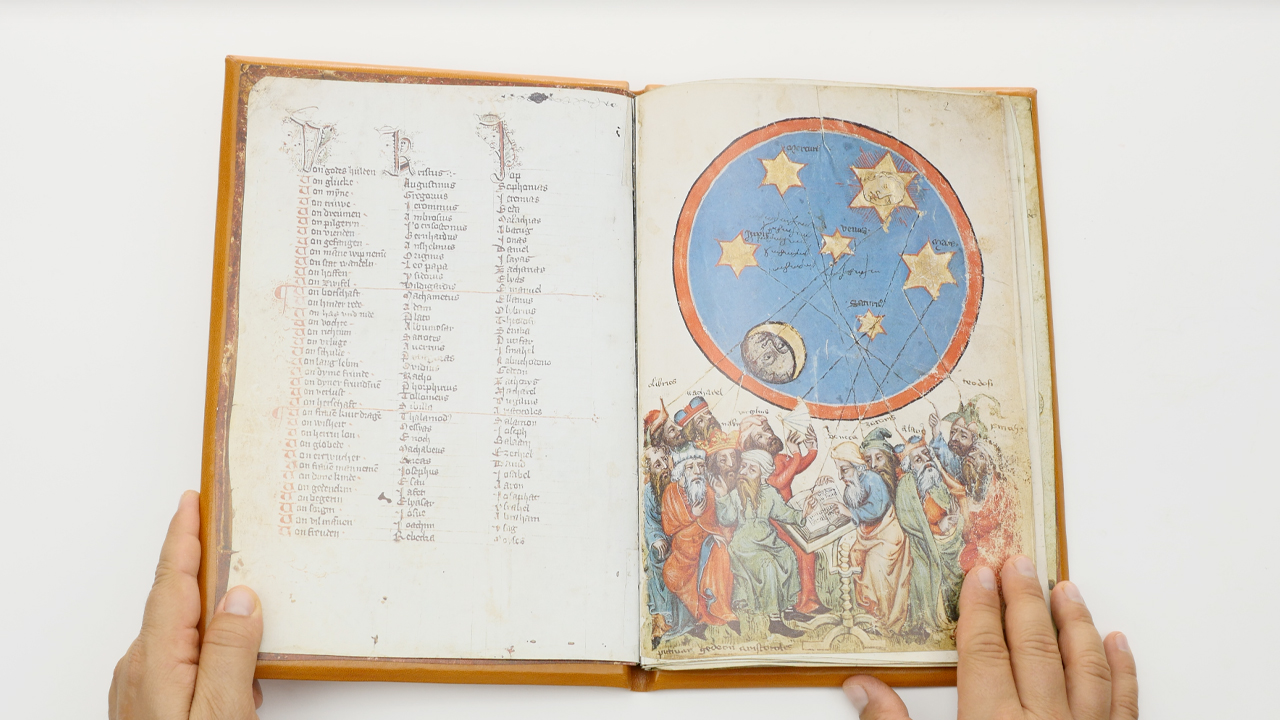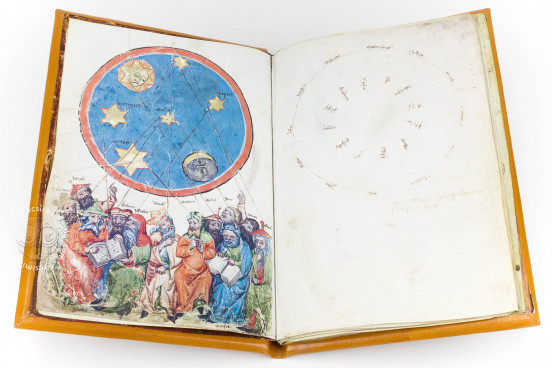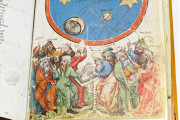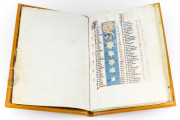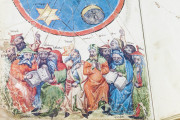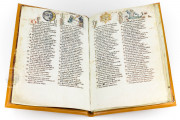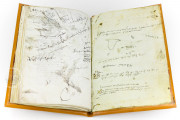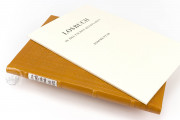The Book of Divination, or Losbuch (“lottery book”), comprises rhymed couplets in Middle High German asking and answering thirty-six questions about aspects of life and fortunes, preceded by astronomical tables. Its two full-page paintings show the sun, moon, and planets being observed by ancient philosophers and astronomers, in one miniature, and by Jewish prophets, in the other (fols. 2r and 2v). Its thirty-six columns of text feature painted vignettes of zodiacal signs, labors of the months, moons, and suns in the upper margin.
The codex was transported to Vienna in 1806 from the Royal Imperial Ambraser Collection (to prevent its capture by French forces) and eventually transferred to the manuscript collection of the National Library of Vienna in 1936.
Historical Context
The Book of Divination represents one of the oldest and most complete rhyming German fortune-telling books (Losbücher). Like all medieval codices of its genre, it belongs to a long tradition of prognostic literature that traces its origins to the solemn oracular practices of ancient Greece. This divinatory tradition was further developed in the Near East before spreading westward.
Philosophical and Cultural Evolution
With the translation of Arabic works into Latin during the 12th century, interest in divination and prognostication was rekindled throughout Western Europe. During this period, the speculative elements of astrology gained philosophical support and scientific legitimization.
The German Losbuch tradition, however, began to diverge from the deterministic view of fate toward a concept of individual responsibility for one's destiny. By the late 14th century, this shift transformed purely prophetic texts into works of a more supportive nature, fundamentally changing the role of fortune-telling books.
The Book of Divination emerges during this transitional period, with its questions and answers balancing between sincere faith and existential fear on one side, and playful amusement on the other.
Structure and Numerological Significance
As in other fortune-telling books, the significant number 36 (3 × 12) determines the overall structure of the text. This reflects the cosmological concept of 36 facies figurae or celestial images positioned within the 12 zodiacal signs, with each image representing 10% of the ecliptic (known as Decanus-Prophecy). The codex presents a list of 36 thematic questions, each followed by 36 verses of answers, systematically arranged so that every question receives one answer on each of the 36 pages.
The illumination extends beyond the small zodiacal figures, celestial bodies, monthly images, and apostolic figures that appear above the text columns, sometimes encompassing entire folio pages (as seen on folios 2r and 2v).
Divinatory Mechanics and Cosmological Design
The oracular consultation process operates through a direct method involving a wooden rotating star wheel or astrolabe (a planimetric representation of the celestial sphere) attached to the inside cover of the book. A fixed pointer selects a particular question on the astrolabe, while the answer is derived from the corresponding zodiacal section indicated in the text. Importantly, the various themes from the Losbuch appear only once on any given page.
The use of this fortune wheel, rooted in the ancient concept of random fortune, demonstrates that this codex represents popular, non-scientific divination rather than scholarly astrology. The predetermined list of questions and answers, along with simple instructions, made astrological consultation accessible to laypeople.
Historical Significance and Cultural Value
Linguistic analysis of the Gothic script and textual references to the Rhine, Mainz, and Aachen suggest the Losbuch originated in western central Germany. Scholars believe it was created in the late 14th century as a commissioned work for the comital chancellery of Limburg.
Its particular significance lies in its 1,296 (36 × 36) couplets, which oscillate between unwavering confidence in the validity of the oracular answers and a skeptical, occasionally ironic attitude toward divinatory practices. To this day, few comparable works so effectively reflect this ambivalent relationship with prognostic arts.
We have 1 facsimile edition of the manuscript "Book of Divination": Losbuch in Deutschen Reimpaaren facsimile edition, published by Akademische Druck- u. Verlagsanstalt (ADEVA), 1972
Request Info / Price
